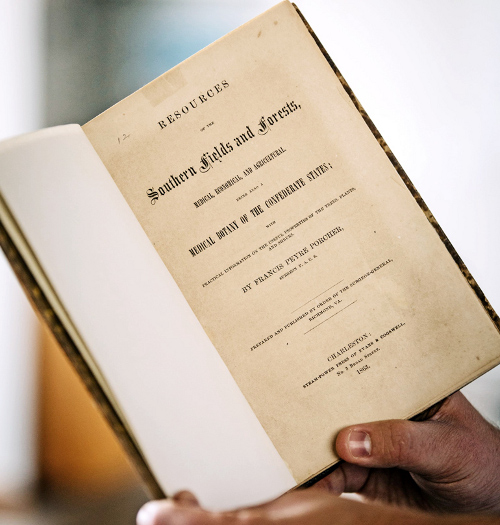
Scientists at Emory University took on the study of some medicinal plants cited in a Civil War era medical guide to see if they actually are effective in treating some infections. The guide, Resources of the Southern Fields and Forests, Medical, Economical, and Agricultural; Being Also a Medical Botany of the Confederate States, by Francis Peyre Porcher, listed the Devil’s Walking Stick, White Oak and Tulip Poplar as having the ability to fight infections in soldiers.
Since surprisingly, more soldiers died from infection than from Civil War battles themselves, fighting infections was of the utmost importance. So naming these three plants as having antiseptic properties was definitely a big deal of the time. The good news is that Emory’s study of them shows that there’s some validity to their use in fighting infections and more study could show that extracts from them could help us fight drug-resistant bacteria today.
Futurity: The results show that extracts from the plants—the white oak, the tulip poplar, and the devil’s walking stick—have antimicrobial activity against one or more of a trio of dangerous species of multi-drug-resistant bacteria associated with wound infections: Acinetobacter baumannii, Staphylococcus aureus, and Klebsiella pneumoniae.
“Our findings suggest that the use of these topical therapies may have saved some limbs, and maybe even lives, during the Civil War,” says senior author Cassandra Quave, assistant professor at the Center for the Study of Human Health and the School of Medicine’s dermatology department at Emory University.
“Our research might one day benefit modern wound care, if we can identify which compounds are responsible for the antimicrobial activity,” says Micah Dettweiler, the first author of the paper in Scientific Reports.
You can read more about this fascinating study by following the links below. Also, be sure to check out the full pages about these plants and their medicinal uses
Resource Links
Futurity: 3 Plants from U.S. Civil War Medical Guide Fight Infection
Emory University: Civil War plant medicines blast drug-resistant bacteria
![]() Resources of the Southern Fields and Forests, Medical, Economical, and Agricultural; Being Also a Medical Botany of the Confederate States, by Francis Peyre Porcher
Resources of the Southern Fields and Forests, Medical, Economical, and Agricultural; Being Also a Medical Botany of the Confederate States, by Francis Peyre Porcher

How fascinating -the wisdom of our fore-fathers is being re-discovered by science and technology